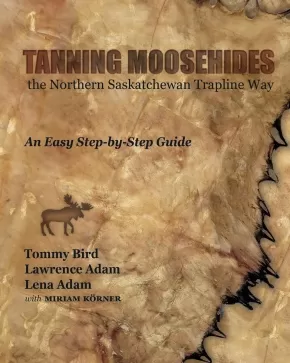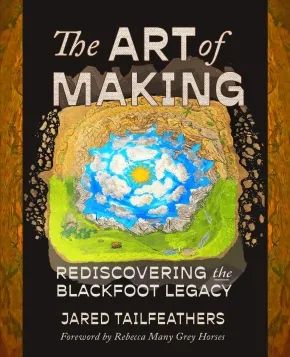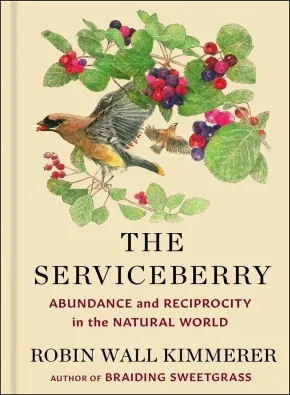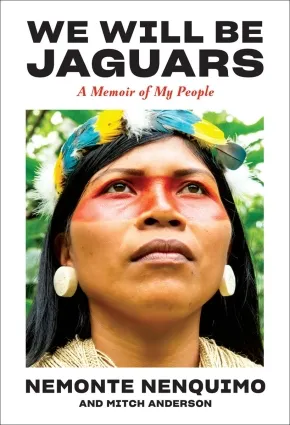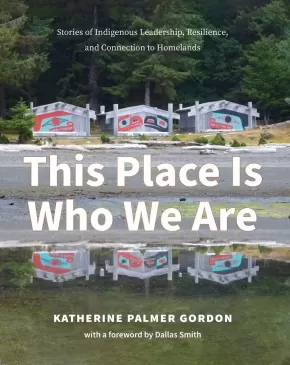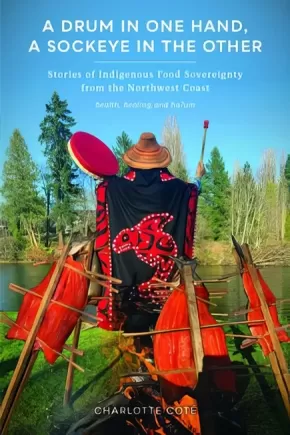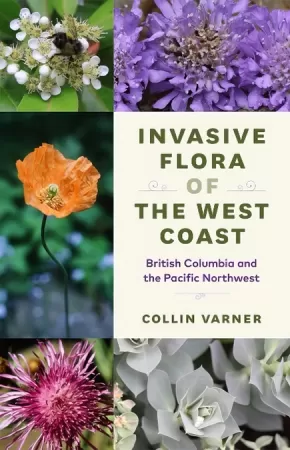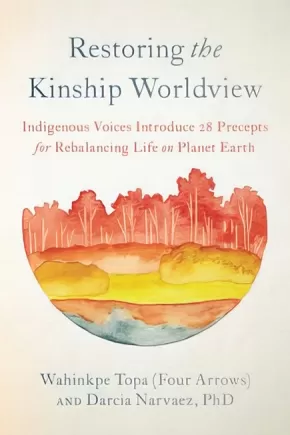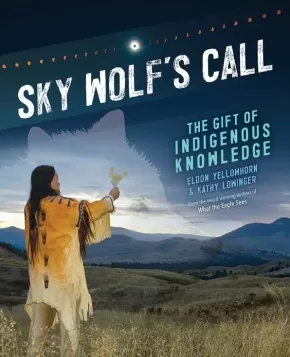
Science and Technology
16
-
30
of
141 Results;
Sort By
Go To
of 10
Tanning Moosehides: The Northern Saskatchewan Trapline Way
$49.95
Format:
Coil Bound
Text Content Territories:
Indigenous Canadian; First Nations; Dene; Denesuline (Chipewyan); Fond du Lac Denes??iné First Nation; Cree (Nehiyawak); Woodland Cree; Rocky Cree; Peter Ballantyne Cree Nation;
ISBN / Barcode: 97817786903
Synopsis:
Synopsis:
Denesųłiné Elders Lawrence and Lena Adam have been tanning hides and sharing their knowledge with others for more than four decades. Woodland Cree knowledge carrier Tommy Bird helped his family tan hides on the trapline as a young boy. Together they share their lifetime of experience to guide a new generation of hide tanners to keep the tradition alive. The trouble-shooting tips and hands-on advice in this book will help you to make your own bone tools and turn raw moosehides into smoke-tanned hides soft enough to sew into mitts or moccasins. Combining traditional knowledge with easy-to-follow instructions and detailed colour photos, Tanning Moosehides the Northern Saskatchewan Trapline Way is a practical guide you will refer to again and again.
Educator Information
The publisher recommends this resource for ages 10+
Recommended in the Indigenous Books for Schools catalogue as a valuable resource for Art, Science, and Social Studies in grades 5 to 12.
Themes: Animals, Arts and Culture, Cultural Teachings, Fashion, Traditional Knowledge.
Additional Information
64 pages | 8.50" x 11.00" | Spiral Bound
The Art of Making: Rediscovering the Blackfoot Legacy
$42.50
Format:
Paperback
Reading Level: N/A
ISBN / Barcode: 9781990735547
Synopsis:
Synopsis:
The Art of Making: Rediscovering the Blackfoot Legacy is a captivating entry into Jared Tailfeathers’ quest of cultural reclamation. Accompanied by his family and loyal dogs, Tailfeathers delves into his Indigenous heritage through hands-on, land-based exploration. The book traces the evolution of the Blackfoot Confederacy, examining its trade routes, resources, and interactions pre- and post-1800s. It provides intricate details of Blackfoot connections with nature, neighbouring First Nations Peoples, and their rich legacy in tool-making, spiritual knowledge seeking, and artistic expression. Tailfeathers’ research began in 2019, driven by a deep desire to reacquaint himself with his cultural and historical identity as a Blackfoot man navigating a post-colonial world. This book is a journey into the heart of Blackfoot culture, told by a man who walks the ancestral trails with his dogs.
Educator & Series Information
This book is part of the Indigenous Spirit of Nature series.
Additional Information
208 pages | 7.25" x 9.25" | Colour Illustrations | Paperback
The Serviceberry: Abundance and Reciprocity in the Natural World
$25.00
Format:
Hardcover
Text Content Territories:
Indigenous American;
ISBN / Barcode: 9781668072240
Synopsis:
Synopsis:
From the #1 New York Times bestselling author of Braiding Sweetgrass, a bold and inspiring vision for how to orient our lives around gratitude, reciprocity, and community, based on the lessons of the natural world.
As Indigenous scientist and author of Braiding Sweetgrass Robin Wall Kimmerer harvests serviceberries alongside the birds, she considers the ethic of reciprocity that lies at the heart of the gift economy. How, she asks, can we learn from Indigenous wisdom and the plant world to reimagine what we value most? Our economy is rooted in scarcity, competition, and the hoarding of resources, and we have surrendered our values to a system that actively harms what we love. Meanwhile, the serviceberry’s relationship with the natural world is an embodiment of reciprocity, interconnectedness, and gratitude. The tree distributes its wealth—its abundance of sweet, juicy berries—to meet the needs of its natural community. And this distribution insures its own survival. As Kimmerer explains, “Serviceberries show us another model, one based upon reciprocity, where wealth comes from the quality of your relationships, not from the illusion of self-sufficiency.”
As Elizabeth Gilbert writes, Robin Wall Kimmerer is “a great teacher, and her words are a hymn of love to the world.” The Serviceberry is an antidote to the broken relationships and misguided goals of our times, and a reminder that “hoarding won’t save us, all flourishing is mutual.”
Reviews
“Robin Wall Kimmerer is writer of rare grace. She writes about the natural world from a place of such abundant passion that one can never quite see the world the same way after having seen it through Kimmerer’s eyes. In Braiding Sweetgrass, she takes us on a journey that is every bit as mythic as it is scientific, as sacred as it is historical, as clever as it is wise. She is a great teacher, and her words are a hymn of love to the world.” —Elizabeth Gilbert
“Robin Wall Kimmerer has written an extraordinary book, showing how the factual, objective approach of science can be enriched by the ancient knowledge of the indigenous people. It is the way she captures beauty that I love the most—the images of giant cedars and wild strawberries, a forest in the rain and a meadow of fragrant sweetgrass will stay with you long after you read the last page.” —Jane Goodall
“I give daily thanks for Robin Wall Kimmerer for being a font of endless knowledge, both mental and spiritual.”—Richard Powers, The New York Times
“Robin Wall Kimmerer opens a sense of wonder and humility for the intelligence in all kinds of life we are used to naming and imagining as inanimate.” —Krista Tippett, host of On Being
Additional Information
112 pages | 5.00" x 7.00" | Hardcover
We Will Be Jaguars: A Memoir of My People
$35.00
Format:
Hardcover
Text Content Territories:
Indigenous South American; Indigenous Peoples in Ecuador; Waorani ;
Reading Level: N/A
ISBN / Barcode: 9781419763779
Synopsis:
Synopsis:
From a fearless, internationally acclaimed activist comes an impassioned memoir about an indigenous childhood, a clash of cultures, and the fight to save the Amazon rainforest
We Will Be Jaguars is an astonishing memoir by an equally astonishing woman. Nenquimo is a winner of TIME magazine’s Earth Award, and MS. magazine named this book among the Most Anticipated Feminist Books of 2024.
Born into the Waorani tribe of Ecuador’s Amazon rainforest—one of the last to be contacted by missionaries in the 1950s—Nemonte Nenquimo had a singular upbringing.
She was taught about plant medicines, foraging, oral storytelling, and shamanism by her elders. At age fourteen, she left the forest for the first time to study with an evangelical missionary group in the city. Eventually, her ancestors began appearing in her dreams, pleading with her to return and embrace her own culture. She listened.
Two decades later, Nemonte has emerged as one of the most forceful voices in climate change activism. She has spearheaded the alliance of indigenous nations across the Upper Amazon and led her people to a landmark victory against Big Oil, protecting over a half million acres of primary rainforest. Her message is as sharp as a spear—honed by her experiences battling loggers, miners, oil companies and missionaries.
In We Will Be Jaguars, she partners with her husband, Mitch Anderson, founder of Amazon Frontlines, digging into generations of oral history, uprooting centuries of conquest, hacking away at racist notions of indigenous peoples, and ultimately revealing a life story as rich, harsh, and vital as the Amazon rainforest herself.
Reviews
“If you want to understand the climate crisis and do something about it, read this book. Nemonte’s writing is as provocative as it is inspiring, a heroine speaking her truth which is exactly what we need to hear. Had we listened long ago to these voices we wouldn’t be in the eye of the storm now.” — Emma Thompson
“We Will Be Jaguars is the story of the humanity and fierce determination of Nemonte Nenquimo, one of the most effective leaders for Indigenous rights and environmental justice. In her gripping memoir, Nenquimo shares her journey from childhood to warrior leader, fighting the forces of greed and destruction that threaten the Waorani People and their vast, spectacular rainforest. Her story highlights the love and strength required to overcome the forces that threaten our planet.” — Laurene Powell Jobs, founder and president, Emerson Collective
“On one level, Nemonte Nenquimo’s memoir is inspiring, moving, and unforgettable; a rarely seen, firsthand insight into a childhood spent in the Amazon rainforest and the extraordinary story of her fight to save it from oil companies. On another level, this intimate and motivating book should spur action from all of us: the fight to save our planet from exploitation is something that affects us all and is the responsibility of us all. Nenquimo’s leadership and example should shame those of us in industrialized countries into changing the way we live and the way we see our world.” — Rowan Hooper, author of How to Save the World for Just a Trillion Dollars
“Everyone should read this––never has a book been more urgent. Truly soul-stirring, Nemonte’s book is a radical manifesto for our times. It moved me to tears. Her story flows like a mighty river, and I was utterly taken by its current.”— Vanessa Kirby, actress and activist
"Full of wisdom, sadness, flourishes of joy and more than a few psychedelic visions, We Will Not be Saved is testament not only to Nenquimo’s resilience but also her deep spiritual connection to her land and ancestors. ... [It] plant[s] readers right in the heart of the rainforest, immersing them in its sounds, smells and kaleidoscopic landscapes. Many are the memoirs that profess to tell untold stories, but here that claim is watertight." — The Guardian
Additional Information
368 pages | 6.00" x 9.00" | Hardcover
A Field Guide to Trees of Ontario
$29.99
Format:
Paperback
Reading Level: N/A
ISBN / Barcode: 9780888545299
Synopsis:
Synopsis:
A comprehensive guide to Ontario trees.
From the cherry blossoms ushering in spring to the maple leaves changing colours for fall, our local trees are beloved markers for the changing seasons. A Field Guide to Trees of Ontario is a portal to the hundreds of trees species found in Ontario, published by the Royal Ontario Museum.
Featuring more than 1,400 vibrant photographs and illustrations, this visually rich and inviting field guide describes the trees likely to be encountered in Ontario, whether on a hike in the woods or on a walk down city streets.
Covering both naturally occurring and cultivated species, this book features an illustrated glossary of botanical terms, distribution maps, and photographs depicting distinctive characteristics of individual tree species.
With diagnostic descriptions for quick recognition of trees by their component parts, and easy-to-use identification keys covering summer and winter conditions, A Field Guide to Trees of Ontario is a must-have for tree enthusiasts--novices and experts alike.
Carry it with you wherever you may find trees, which is practically everywhere.
Additional Information
512 pages | 4.50" x 8.00" | Paperback
Held by the Land: A Guide to Indigenous Plants for Wellness
$32.99
Format:
Hardcover
Text Content Territories:
Indigenous Canadian; First Nations; Salish; Coast Salish; Squamish;
ISBN / Barcode: 9781577152941
Synopsis:
Synopsis:
Author Leigh Joseph, an ethnobotanist and a member of the Squamish Nation, provides a beautifully illustrated essential introduction to Indigenous plant knowledge.
Plants can be a great source of healing as well as nourishment, and the practice of growing and harvesting from trees, flowering herbs, and other plants is a powerful way to become more connected to the land. The Indigenous Peoples of North America have long traditions of using native plants as medicine as well as for food. Held by the Land honors and shares some of these traditions, offering a guide to:
- Harvesting herbs and other plants and using them topically
- North American plants that can treat common ailments, add nutrition to your diet, become part of your beauty regime, and more
- Stories and traditions about native plants from the author's Squamish culture
- Using plant knowledge to strengthen your connection to the land you live on
Early chapters will introduce you to responsible ways to identify and harvest plants in your area and teach you how to grow a deeper connection with the land you live on through plants. In the plant profiles section, common plants are introduced with illustrations and information on their characteristics, range, how to grow and/or harvest them, and how to use them topically and as food. Special features offer recipes for food and beauty products along with stories and traditions around the plants.
This beautiful, full-color guide to Indigenous plants will give you new insights into the power of everyday plants.
Additional Informaiton
192 pages | 8.00" x 9.25" | Hardcover
This Place Is Who We Are: Stories of Indigenous Leadership, Resilience, and Connection to Homelands
$39.95
Format:
Paperback
Text Content Territories:
Indigenous Canadian; First Nations; Kwakwaka'wakw (Kwakiutl); Ligwilda'wx (Laich-kwil-tach); Wei Wai Kai Nation; Dzwada’enuxw; Haida; Nuxalk (Bella Coola);
Reading Level: N/A
ISBN / Barcode: 9781990776137
Synopsis:
Synopsis:
This Place Is Who We Are profiles Indigenous communities in central and northern coastal BC that are reconnecting to their lands and waters—and growing and thriving through this reconnection.
Indigenous peoples and cultures are integrally connected to the land. Well-being in every sense—physical, social, environmental, economic, spiritual and cultural—depends on that relationship, which is based on a fundamental concept: when the land is well, so are the people.
With increasing strength, Indigenous peoples in this vast region of BC—which spans the homelands of more than two dozen First Nations and one of the largest remaining coastal temperate rainforests in the world—are restoring what has been lost through environmental depredation and healing what has been devastated by colonization.
This volume is a collection of ten of these inspiring stories. X̱aayda voices explain how their Rediscovery camps are healing and empowering their youth; Dzawada̱’enuxw Hereditary Chief Maxwiyalidizi K’odi Nelson shares the story of building a healing centre and ecolodge; Wei Wai Kum Chief Christopher Roberts describes the challenges and opportunities for an urban First Nation looking to prosper while protecting the environment and ancient Ligʷiłdaxʷ history and living cultural values; and many more Indigenous leaders share their own experiences of growth, strength and reconnection.
Thoughtful and inspiring, This Place Is Who We Are illustrates what can be accomplished when conservation and stewardship are inextricably intertwined with the prosperity and well-being of communities.
Reviews
“Katherine Palmer Gordon, a consummate listener, weaves a powerful tapestry of ten First Nations people, deeply grounded in land, memory and story. Their lives honour the inextinguishable inter-connectedness of humans and nature, in righteous defiance of colonization. These are stories that point to an optimistic future based on the teachings of Ancestors and Elders with a view to making the world better for children, grandchildren and children yet to come. To do this, human wellbeing and land protection must be inseparable. This book is an encounter with wonderful people doing wonderful things. This Place is Who We Are is an invitation to hope for a better society, a better world, featuring ten people creating it. I thank the contributors and Katherine Palmer Gordon for engaging in a visionary conversation.” — Shelagh Rogers, O.C. Host/Producer of The Next Chapter, CBC Radio One, Honorary Witness, Trut
“A beautiful collection of stories and lived experiences! Each with gentle and loving reminders of our sacred connections to each other, the land and water and all living beings. Individually, these stories are inspiring, hopeful and thought provoking. As a collection, majestically woven together by Katherine Palmer Gordon, they have the potential to change hearts and minds of readers, decision makers and future generations.” — Monique Gray Smith
“An astute facilitator of Indigenous governmental relationships and reconciliation, Katherine Palmer Gordon is also an award-winning writer, and a very good listener who earns trust. These deeply personal accounts of Indigenous cultural rediscovery, empowerment—and healing in a post-colonial world—are truly inspiring. Steeped in ancient connections with the land, the shared wisdom and vision of elders, youth and community leaders offer timely lessons for a healthier, more respectful relationship between people, wildlife and our planet. This is good medicine for all.” — Mark Forsythe, Co-author of The Trail of 1858: British Columbia's Gold Rush Past and former C
“Katherine Palmer Gordon, a consummate listener, weaves a powerful tapestry of ten First Nations people, deeply grounded in land, memory and story. Their lives honour the inextinguishable inter-connectedness of humans and nature, in righteous defiance of colonization. These are stories that point to an optimistic future based on the teachings of Ancestors and Elders with a view to making the world better for children, grandchildren and children yet to come. To do this, human wellbeing and land protection must be inseparable. This book is an encounter with wonderful people doing wonderful things. This Place is Who We Are is an invitation to hope for a better society, a better world, featuring ten people creating it. I thank the contributors and Katherine Palmer Gordon for engaging in a visionary conversation.” — Shelagh Rogers, O.C. Host/Producer of The Next Chapter, CBC Radio One, Honorary Witness, Trut
“A beautiful collection of stories and lived experiences! Each with gentle and loving reminders of our sacred connections to each other, the land and water and all living beings. Individually, these stories are inspiring, hopeful and thought provoking. As a collection, majestically woven together by Katherine Palmer Gordon, they have the potential to change hearts and minds of readers, decision makers and future generations.” — Monique Gray Smith
“An astute facilitator of Indigenous governmental relationships and reconciliation, Katherine Palmer Gordon is also an award-winning writer, and a very good listener who earns trust. These deeply personal accounts of Indigenous cultural rediscovery, empowerment—and healing in a post-colonial world—are truly inspiring. Steeped in ancient connections with the land, the shared wisdom and vision of elders, youth and community leaders offer timely lessons for a healthier, more respectful relationship between people, wildlife and our planet. This is good medicine for all.” — Mark Forsythe, Co-author of The Trail of 1858: British Columbia's Gold Rush Past and former C
Additional Information
256 pages | 8.00" x 10.00" | Paperback
256 pages | 8.00" x 10.00" | Paperback
A Drum in One Hand, a Sockeye in the Other: Stories of Indigenous Food Sovereignty from the Northwest Coast
$41.00
Format:
Paperback
Text Content Territories:
Indigenous Canadian; First Nations; Nuu-chah-nulth (Nootka); Tseshaht First Nation;
Grade Levels: 12; University/College;
ISBN / Barcode: 9780295749525
Synopsis:
Synopsis:
In the dense rainforest of the west coast of Vancouver Island, the Somass River (c̓uumaʕas) brings sockeye salmon (miʕaat) into the Nuu-chah-nulth community of Tseshaht. C̓uumaʕas and miʕaat are central to the sacred food practices that have been a crucial part of the Indigenous community’s efforts to enact food sovereignty, decolonize their diet, and preserve their ancestral knowledge.
In A Drum in One Hand, a Sockeye in the Other, Charlotte Coté shares contemporary Nuu-chah-nulth practices of traditional food revitalization in the context of broader efforts to re-Indigenize contemporary diets on the Northwest Coast. Coté offers evocative stories of her Tseshaht community’s and her own work to revitalize relationships to haʔum (traditional food) as a way to nurture health and wellness. As Indigenous peoples continue to face food insecurity due to ongoing inequality, environmental degradation, and the Westernization of traditional diets, Coté foregrounds healing and cultural sustenance via everyday enactments of food sovereignty: berry picking, salmon fishing, and building a community garden on reclaimed residential school grounds. This book is for everyone concerned about the major role food plays in physical, emotional, and spiritual wellness.
Reviews
"A powerful philosophy of food sovereignty. Coté successfully navigates myriad scholarly and nonscholarly voices, telling a compelling comprehensive story that helps us understand the practices and policies needed to make change in our food systems." — Kyle Whyte, Michigan State University
"Adeptly uses a deep storytelling method, including both lived experience and critical analysis of history and theory, to examine experiences and transformations of Indigenous foodways." — Hannah Wittman, University of British Columbia
"I am so grateful for Charlotte Cote’s A Drum in One Hand, a Sockeye in the Other, which creates a path into the living foodways and thoughtways of her people. Her warm, storytelling voice and sharing of collective knowledge embody the generous spirit of a feast, and this book itself, is a feast." — Robin Wall Kimmerer (Potawatomi), SUNY Environmental Science and Forestry
Additional Information
208 pages | 6.00" x 9.00" | 17 b&w illustrations | 2 maps | Paperback
Braiding Sweetgrass for Young Adults: Indigenous Wisdom, Scientific Knowledge, and the Teachings of Plants
$27.50
Artists:
Format:
Paperback
Text Content Territories:
Indigenous American; Indigenous Canadian;
ISBN / Barcode: 9781728458991
Synopsis:
Synopsis:
Drawing from her experiences as an Indigenous scientist, botanist Robin Wall Kimmerer demonstrated how all living things—from strawberries and witch hazel to water lilies and lichen—provide us with gifts and lessons every day in her best-selling book Braiding Sweetgrass. Adapted for young adults by Monique Gray Smith, this new edition reinforces how wider ecological understanding stems from listening to the earth’s oldest teachers: the plants around us. With informative sidebars, reflection questions, and art from illustrator Nicole Neidhardt, Braiding Sweetgrass for Young Adults brings Indigenous wisdom, scientific knowledge, and the lessons of plant life to a new generation.
Awards
- 2022 Publishers Weekly Best Book of the Year winner
- 2023 NSTA/CBC Outstanding Science Trade Books for Students K-12 winner
- 2023 Nautilus Book Awards winner
- 2023 The Canadian Children's Book Centre Best Books for Kids and Teens winner
- 2022 Kirkus Best Teen Books of the Year winner
- 2023 NSTA/CBC Outstanding Science Trade Books for Students K-12 winner
- 2023 Riverby Award winner
- 2024 Texas Topaz Nonfiction Reading List winner
Reviews
"Braiding Sweetgrass for Young Adults is my new favorite book! What a great way for young people (and anyone, really) to learn about our healing medicines. So many teachings within the pages. I love the mix of photos, illustrations, and text boxes filled with reflective questions and translations. I will be purchasing boxes of this incredible book to share with loved ones! Chii miigwech!"—Angeline Boulley, #1 NYT Bestselling author of Firekeeper's Daughter
Educator Information
Recommended for ages 12 to 18.
“The themes that are interwoven throughout Braiding Sweetgrass align beautifully with both middle school and high school curriculum around social and emotional learning and environmental science. This new edition will help affirm the identities and beliefs of Indigenous teens while also introducing non-Indigenous teens to Indigenous teachings and ways of understanding the natural world.” - Shaina Olmanson, Editorial Director for Young Adult Nonfiction at Lerner Publishing Group
Additional Information
304 pages | 5.50" x 8.25" | Paperback
Forest Walking: Discovering the Trees and Woodlands of North America
$24.95
Format:
Paperback
ISBN / Barcode: 9781771643313
Synopsis:
Synopsis:
Awaken your senses and learn how to be a forest detective—with Peter Wohlleben, New York Times-bestselling author of The Hidden Life of Trees.
When you walk in the woods, do you use all five senses to explore your surroundings? For most of us, the answer is no—but when we do, a walk in the woods can go from pleasant to immersive and restorative. Forest Walking teaches you how to get the most out of your next adventure by becoming a forest detective, decoding nature’s signs and awakening to the ancient past and thrilling present of the ecosystem around you.
- What can you learn by following the spread of a root, by tasting the tip of a branch, by searching out that bitter almond smell?
- What creatures can be found in a stream if you turn over a rock—and what is the best way to cross a forest stream, anyway?
- How can you understand a forest’s history by the feel of the path underfoot, the scars on the trees along the trail, or the play of sunlight through the branches?
- How can we safely explore the forest at night?
- What activities can we use to engage children with the forest?
Throughout Forest Walking, the authors share experiences and observations from visiting forests across North America: from the rainforests and redwoods of the west coast to the towering white pines of the east, and down to the cypress swamps of the south and up to the boreal forests of the north.
With Forest Walking, German forester Peter Wohlleben teams up with his longtime editor, Jane Billinghurst, as the two write their first book together, and the result is nothing short of spectacular. Together, they will teach you how to listen to what the forest is saying, no matter where you live or which trees you plan to visit next.
Reviews
“A wonderfully clear and practical guide for all ages. This book will fast-track you into the joys of spending time amongst the trees.”—Tristan Gooley, author of The Lost Art of Reading Nature’s Signs and How to Read Water
“You'll be changed after reading this fine and enchanting book.”—Richard Louv, author of Our Wild Calling and Last Child in the Woods
Additional Information
240 pages | 5.25" x 8.50" | 1 Map, Black and White Photos Throughout | Paperback
Invasive Flora of the West Coast: British Columbia and the Pacific Northwest
$24.95
Format:
Paperback
ISBN / Barcode: 9781772034134
Synopsis:
Synopsis:
A compact, full-colour field guide to the growing number of invasive plant species spreading across coastal BC and the Pacific Northwest, highlighting their hazards and uses.
The spread of invasive plant species is a growing concern across the coastal Pacific Northwest. Invasive plants compete for space with native plants, alter the natural habitat, and even interfere with the diets of local wildlife. Hundreds of these species are so commonly seen in our backyards, forests, and roadsides, that many people do not even realize that these plants are not native to this region.
Designed for amateur naturalists, gardeners, and foragers, Invasive Flora of the West Coast is a clear, concise, full-colour guide to identifying and demystifying more than 170 invasive plant species in our midst, from Evening primrose to Scotch broom. Featuring colour photography, origin and etymology, safety tips and warnings, as well as historical uses, this book is practical, user-friendly, and portable for easy, on-the-go identification.
Reviews
“Varner’s latest contribution reveals the astonishing diversity of plants, vines, shrubs, and trees that crossed continents and oceans to take root in our backyard. Like the teeming collection of uninvited guests it describes, this guide would be appalling if it weren’t so wondrous. A concise and vivid gem.”—Arno Kopecky, author of The Environmentalist's Dilemma
“Collin Varner has ticked yet another much-needed field-guide box with his latest book. This tidy volume describes more than 170 of the region's bad horticultural actors with concise descriptions and plenty of fascinating cultural tidbits, all illustrated and many with Varner's own excellent photographs.”—Douglas Justice, Associate Director, Horticulture & Collections, UBC Botanical Garden
“Invasive plants are the second greatest threat to biodiversity and are often found in and around the communities in which we live and play. This accessible guide offers readers a solid resource, enabling all of us to be more self-reliant in confidently identifying plants causing some of the greatest damage to our gardens, backyards, natural areas, and sensitive farm habitats. This book belongs on the shelves of everyone who enjoys our natural spaces, and who wants to ensure healthy landscapes for generations to come.”—Gail Wallin, Executive Director, Invasive Species Council of BC"
Additional Information
224 pages | Paperback
Making a Chaputs: The Teachings and Responsibilities of a Canoe Maker
$24.95
Format:
Paperback
Text Content Territories:
Indigenous Canadian; First Nations; Nuu-chah-nulth (Nootka); Tla-o-qui-aht First Nation;
Reading Level: N/A
ISBN / Barcode: 9780772680273
Synopsis:
Synopsis:
A rich visual testament to the practical and cultural power of the dugout canoe, balanced in its description of meaning and method.
Tla-o-qui-aht master canoe maker Joe Martin, in collaboration with former museum curator Alan Hoover, describes the meaning and method behind one of the most vivid and memorable symbols of the Northwest Coast: the dugout canoe. Both artform and technological marvel, the chaputs carries Indigenous cultural knowledge passed down through generations, not only of the practical forestry and woodworking that shape every canoe, but also of the role and responsibilities of the canoe maker.
The text includes both a step-by-step explanation of the canoe-making process from tree selection onward (carefully described and dynamically illustrated) and the personal histories of a number of Joe's canoes, encompassing their planning, creation, cultural significance and role in the process of reconciliation. The teachings Joe received from his father and the expertise he has gained in a lifetime of canoe-making are recorded here in his own words for generations to come.
Reviews
“In Making a Chaputs, Nuu-chah-nulth canoe artist Joe Martin shows how he carves dugout canoes, explaining how and why he makes two full-size canoes from a single cedar log. It is a clever, amazing tradition rooted in deep respect for the forest and a lifetime of Indigenous knowledge—a highly recommended book!”—Kathryn Bernick, archaeologist and author of numerous books including Waterlogged: Examples and Procedures for Northwest Coast Archaeologists and Basketry and Cordage from Hesquiat Harbour
“When tracing ancient basketry styles in the archaeological waterlogged/wet sites of the Salish Sea for thousands of years, we defined our approach as Generationally-Linked Archaeology. As seen at the Makah Ozette Village archaeological wet site from ca. 1700, preserved chaputs canoe models reflect this West Coast tradition a full 16 generations back. Joe Martin, Tla-o-qui-aht First Nation Elder and master canoe carver, best reflects these generationally linked traditions, constructing over 60 full-size chaputs, passing this paramount art on through Native apprentices and, here, in his own words, with esteemed curator and author Alan Hoover.” —Ed Carriere, Suquamish Elder and Master Basketmaker and Coast Salish Canoe Carver, and Dale R. Croes, Ph.D. Northwest Coast wet site archaeologist, Washington State University, co-authors of Re-Awakening Ancient Salish Sea Basketry
Additional Information
96 pages | 8.97" x 8.97" | Paperback
Restoring the Kinship Worldview: Indigenous Voices Introduce 28 Precepts for Rebalancing Life on Planet Earth
$28.95
Format:
Paperback
Text Content Territories:
Indigenous American; Native American; Indigenous;
Reading Level: N/A
ISBN / Barcode: 9781623176426
Synopsis:
Synopsis:
Selected speeches from Indigenous leaders around the world--necessary wisdom for our times, nourishment for our collective, and a path away from extinction toward a sustainable, interconnected future.
Indigenous worldviews, and the knowledge they confer, are critical for human survival and the wellbeing of future generations. Editors Wahinkpe Topa (Four Arrows) and Darcia Narvaez present 28 powerful excerpted passages from Indigenous leaders, including Mourning Dove, Robin Wall Kimmerer, Winona LaDuke, and Xiuhtezcatl Martinez. Accompanied by the editors’ own analyses, each chapter reflects the wisdom of Indigenous worldview precepts like:
• Egalitarian rule versus hierarchical governance
• A fearless trust in the universe, instead of a fear-based culture
• The life-sustaining role of ceremony
• Emphasizing generosity and the greater good instead of pursuing selfish goals and for personal gain
• The laws of nature as the highest rules for living
The editors emphasize our deep need to move away from the dominant Western paradigm--one that dictates we live without strong social purpose, fails to honor the earth as sacred, leads with the head while ignoring the heart, and places individual “rights” over collective responsibility. Restoring the Kinship Worldview is rooted in an Indigenous vision and strong social purpose that sees all life forms as sacred and sentient--that honors the wisdom of the heart, and grants equal standing to rights and responsibilities.
Inviting readers into a world-sense that expands beyond perceiving and conceiving to experiencing and being, Restoring the Kinship Worldview is a salve for our times, a nourishment for our collective, and a holistic orientation that will lead us away from extinction toward an integrated, sustainable future.
Reviews
“Humans have a particular ecological niche, a role as the custodial species of this earth. We must return our species to this niche within the next decade, or perish. This book is a perfect place to start—the foundation is good relations, making kin both human and nonhuman—and here we have story from a gathering of some of the finest Indigenous thinkers on the planet. Four Arrows and Darcia Narvaez have a particular way of bringing the right people together for such purposes.” —TYSON YUNKAPORTA, author of Sand Talk, senior research fellow at Deacon University, woodcarver, and poet
“Mahalo Four Arrows and Darcia Narvaez for this collection, this eloquence and grace through time so we can recognize and honor the common sense and purpose of continuity. All of it is needed now. We are all meant to wake up together.” —MANULANI ALULI MEYER, director of Indigenous education, University of Hawai‘i–West O‘ahu
“Darcia Narvaez and Four Arrows have gathered an inspiring pastiche of wise Native American voices woven together by their own insightful and heartfelt dialogues to gift us with an invaluable bundle of tenets and templates for the urgent project of decolonizing and rewilding our minds and communities.” —BILL PLOTKIN, PhD, author of Soulcraft, Wild Mind, and The Journey of Soul Initiation
Additional Information
336 pages | 6.00" x 8.95" | Paperback
Siku: Life on Ice
$29.95
Artists:
Format:
Hardcover
Text Content Territories:
Indigenous Canadian; Inuit;
Reading Level: N/A
ISBN / Barcode: 9781772274455
Synopsis:
Synopsis:
Arctic ice is a daily consideration for people living above the Arctic circle. Ice is key to successful hunts, ease of travel, and the health of wildlife. This book features sweeping landscape photography of Arctic sea ice in all its forms, accompanied by anecdotes from community members across the North. From traditional stories of what lurks under the ice to harrowing tales of hunters on the ice and traditional knowledge about ice safety and conditions, this book presents the beauty, complexity, and unique challenges of living daily in an ever-evolving icy landscape.
Educator Information
Foreword by Sheila Watt-Cloutier
Additional Information
72 pages | 11.00" x 8.00" | Colour photographs | Hardcover
Sky Wolf's Call: The Gift of Indigenous Knowledge
$16.95
Format:
Paperback
Text Content Territories:
Indigenous Canadian; Indigenous American;
ISBN / Barcode: 9781773216294
Synopsis:
Synopsis:
From healing to astronomy to our connection to the natural world, the lessons from Indigenous knowledge inform our learning and practices today.
How do knowledge systems get passed down over generations? Through the knowledge inherited from their Elders and ancestors, Indigenous Peoples throughout North America have observed, practiced, experimented, and interacted with plants, animals, the sky, and the waters over millennia. Knowledge keepers have shared their wisdom with younger people through oral history, stories, ceremonies, and records that took many forms.
In Sky Wolf’s Call, award-winning author team of Eldon Yellowhorn and Kathy Lowinger reveal how Indigenous knowledge comes from centuries of practices, experiences, and ideas gathered by people who have a long history with the natural world. Indigenous knowledge is explored through the use of fire and water, the acquisition of food, the study of astronomy, and healing practices.
Reviews
"An authoritative tribute to Indigenous knowledge systems that's a must-have for every library and classroom." - Kirkus Reviews
“Sky Wolf’s Call has an astoundingly broad scope introducing Indigenous Traditional Ecological Knowledge (TEK) in North America from time immemorial to the current day … This fast paced celebration of Indigenous innovation and technology is riveting.” - The British Columbia Review
Educator Information
Interest Age: 11+
Grade: 6+
Reading Age: 11+
A Junior Library Guild Gold Standard Selection
Table of Contents
Author’s Note
1: Sky Wolf’s Call: The Gift of Indigenous Knowledge: Foundational ideas behind Indigenous Knowledge and the importance of retaining, maintaining, and learning this sacred knowledge.
2: Water Knowledge Ways: Water links us all and is sacred. Indigenous people have fought to protect the gift of water from harm, and the critical role it has played in transportation, agriculture, irrigation, and food.
3: Fire and Smoke Knowledge: Fire and smoke are great gifts, including the burning of tobacco. In sacred ceremonies, smoke connects our breath with the heavens. Fire cooks our food, helps grow our crops, and even keeps our waters clean. Cultural burns are used to benefit the land.
4: Indigenous Knowledge and Food Security: Sharing, growing, and receiving food with family, community, and visitors is both an honour and a tradition. By understanding the traditional practices of salmon fishing, clam gardens, planting and harvesting certain crops, or hunting buffalo, Indigenous Peoples have respected what Mother Earth has to offer.
5: Healing Knowledge Ways: The use of the medicine wheel and the sweat lodge have been used over centuries and still help sick and troubled people. Games such as lacrosse and chunkey have helped in building individual strength and community spirit. And braiding together Indigenous healing and western science has opened new learning opportunities.
6: Sky Knowledge: From the earliest Indigenous astronomers to modern astrophysicists, these sky watchers have studied the sacred gifts of the sky: the sun, moon, planets, and stars that have produced maps, calendars, beliefs about how to govern, and even directions for building homes.
7: Keeping the Knowledge: Indigenous People hold oral narratives in high esteem because that was the way knowledge passed from one generation to the next. People in North America recorded important events with symbols, pictographs (paintings), and petroglyphs (carvings). Language Keepers and Knowledge keepers are making sure that Indigenous knowledge is never forgotten.
8: Sky Wolf’s Call: Indigenous knowledge is based on the idea that this world is a gift. Understanding the idea of connections (the skies with the earth, people with animals, the practical with the spiritual) is an important lesson with the challenges of climate change, pandemics, and wars. The wisdom of Indigenous Knowledge can help the whole world.
Thanks and Acknowledgments
Glossary
Selected Reading
Sources and Contacts
Additional Information
120 pages | 7.50" x 9.25" | Paperback
Sort By
Go To
of 10

